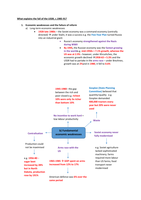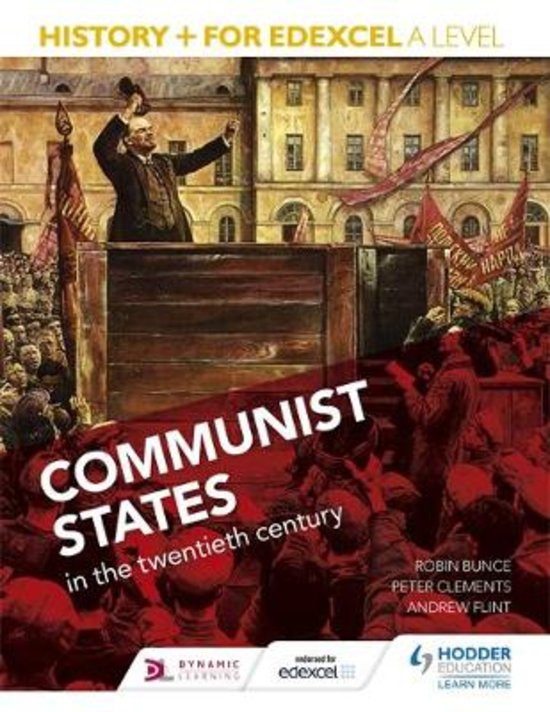What explains the fall of the USSR, c.1985-91?
1. Economic weaknesses and the failure of reform
a) Long-term economic weaknesses
1928-late 1980s – the Soviet economy was a command economy (centrally
directed) under Stalin, it was a success e.g. the Five-Year Plan turned Russia
into an industrial giant:
Russia’s economy strengthened against the Nazis
during WWII
By 1945, the Russian economy was the fastest growing
in the worlde.g. mid-1950s = 7.1% growth, whereas the
US was at 2.9% - however, under Khrushchev, the
economic growth declined 1958-63 = 5.3% and the
USSR had to partake in the arms race – under Brezhnev,
growth was at 2%and in 1980, it fell to 0.6%
1945-1980– the gap Gosplan (State Planning
between the rich and Committee) believed that
poor closed e.g. richest quantity>quality e.g.
10% were only 3x richer Gosplan demanded
than bottom 10% 400,000 tractors every
year but 20% were never
used
No incentive to work hard =
low labour productivity
Waste
b) Fundamental
Centralisation Soviet economy never
economic weaknesses fully modernised
Production could
not be maximised Arms race with the e.g. Soviet agriculture
US lacked sophisticated
machinery; farms
e.g. 1956-80 – required more labour
sugar beet 1965-1985 GDP spent on arms than US farms; food
increased by 28% increased from 12% to 17% transport never
but in North modernised
Dakota, production
rose by 191%
American defence was 6% over the
same period





